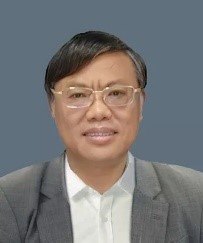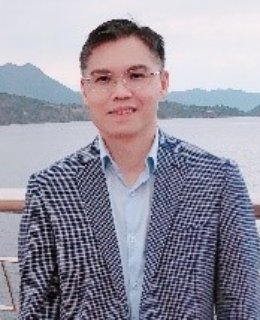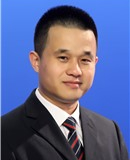
Prof. De-Shuang Huang
Eastern Institute of Technology, Ningbo (EIT)
IEEE Fellow
IAPR Fellow
AAIA Fellow

Prof. Bin Chen
Xi'an Jiaotong University, China
Speech Title: Hybrid laser speckle and hyperspectral imaging for the personalized laser treatment of vascular and pigmented dermatosis.
Abstract: Vascular and pigmented dermatoses will influence physical and psychological health of patients. Based on the selective photothermolysis, laser therapy has become the first choice of treatment. However, the total clearance rate is still lower than 20%, owing to the unclear mechanism of laser-tissue interaction and lack of detection technology of tissue structure. To simulate the heat transfer and thermal damage of hemoglobin and melanin induced by short pulse laser energy, non-equilibrium heat transfer model in skin tissue was constructed for vascular and pigmented dermatosis. Through the model, laser parameters were optimized, including wavelength, pulse duration and incident laser fluence. Together with Arrhenius integral, the thermal damage dynamics can be quantitatively evaluated. To validate the theoretical model, in vivo animal model was conducted based on dorsal skin model to visualize the dynamic response inside skin tissue including heat transfer and thermal injury. Non-destructive detection of skin tissue structure and concentration of chromophores (hemoglobin and melanin) were developed by hybrid laser speckle and hyperspectral imaging technology. Real-time feedback of the treatment effect for skin disease can be obtained, and personalized strategy for the laser treatment of vascular and pigmented dermatosis can be achieved.
Bio: Professor Chen, the vice director of State Key Laboratory of Multiphase Flow in Power Engineering, the candidate of Program for New Century Excellent Talents in University. He was employed by National Maritime Research Institute of Japan as a postdoctoral researcher from 2003 to 2004, he has worked at Xi'an Jiaotong University since 1996, he served as the deputy head of multiphase flows professional group of Society of Fluid Mechanics Branch of China, the member of Society of Chemical Engineering of Japan and the member of Society of Engineering Thermophysics of China. Professor Chen has been working on those fields: fundamentals and basic and theoretical applications research of Multiphase Flow, construction of two-phase turbulence model, unstructured mesh generation technology, the interface capturing algorithm and biomedical Multiphase Flow research.

Prof. Fangxiang Wu
IEEE Senior Member
Title: Artificial Intelligence for Liver Cancer Diagnosis
Abstract: The liver cancer is the fifth most common cause of mortality. The prevention of such deadly diseases in living beings requires accurate and robust early detection techniques. Artificial intelligence methods with liver images provide the great opportunities for liver cancer diagnosis. In this talk, after brief introductions to liver cancer and machine learning, I present three machine learning models of our work in liver image analysis, which include a RMS-Unet for liver cancer lesion segmentation, a multi-level GAN image enhancement model for liver cancer diagnosis, and a multi-modal deep network for liver cancer diagnosis.
Bio: Dr. FangXiang Wu’s research interests include Artificial Intelligence, Machine/Deep Learning, Computational Biology, Health Informatics, Medical Image Analytics, and Complex Network Analytics. Dr. Wu has published about 360 journal papers and more than 130 conference papers. His total google scholar citations are about 15000, h-index is 62. He is among top 2% world’s scientists ranked by Stanford University. Dr Wu is serving as the editorial board member of several international journals (including IEEE TCBB, Neurocomputing, etc.) and as the guest editor of numerous international journals, and as the program committee chair or member of many international conferences. He is an IEEE senior member.

Prof. Yangchao Chen
The Chinese University of Hong Kong, China
Speech Title: Epigenetic regulation of lncRNAs and circRNAs in cancer
Abstract: Long non-coding RNA HOX Transcript Antisense RNA (HOTAIR) is overexpressed in multiple cancers with diverse genetic profiles. Since HOTAIR heavily contributes to cancer progression by promoting tumor growth and metastasis, HOTAIR becomes a potential target for cancer therapy. However, the underlying mechanism leading to HOTAIR deregulation is
largely unexplored.
We demonstrated that the establishment of CDK9/RNA
PolII/H3K4me3/DNA methylation feedback promoted HOTAIR expression by RNA elongation enhancement in cancer.
Circular RNA is another type of non-coding RNA implicated in multiple cancers. In the past
years, we performed genome-wide identification of circRNAs with critical roles in pancreatic cancer. We demonstrated that circRTN4and circFOXK2 played important roles in pancreatic cancer and further explored their underlying mechanisms.
The upregulated circRTN4 promotes tumor growth and liver metastasis in PDAC through the novel circRTN4-miR-497-5p-HOTTIP pathway. In addition, circRTN4 stabilizes RAB11FIP1 to contribute epithelial-mesenchymal transition.
Bio: Prof. CHEN Yangchao is currently a Professor at School of Biomedical Sciences, The Chinese University of Hong Kong (CUHK). He obtained his Ph.D. from Sun Yat-sen University in 2003 and later on was trained as a postdoctoral fellow at University of Washington, Seattle. He has been faculty member as Research Assistant Professor, Assistant Professor and Associate Professor at Faculty of Medicine CUHK since 2007. His research interests include epigenetics in cancer, histone modification particularly methylation, long and short non-coding RNAs, development of novel therapeutics for liver and pancreatic cancer. The ultimate goal of his lab is aimed at the identification of novel diagnostic markers and therapeutic targets for pancreatic and liver cancer.

Prof. Guang-Zhong Wang
Chinese Academy of Sciences, China
Speech Title: Noncoding transcripts are linked to brain resting-state activity in non-human primates
Abstract: Brain-derived transcriptomes are known to correlate with resting-state brain activity in humans. Whether this association holds in nonhuman primates remains uncertain. Here, we search for such molecular correlates by integrating 757 transcriptomes derived from 100 macaque cortical regions with resting-state activity in separate conspecifics. We observe that 150 noncoding genes explain variations in resting-state activity at a comparable level with protein-coding genes. In-depth analysis of these noncoding genes reveals that they are connected to the function of nonneuronal cells such as oligodendrocytes. Co-expression network analysis finds that the modules of noncoding genes are linked to both autism and schizophrenia risk genes. Moreover, genes associated with resting-state noncoding genes are highly enriched in human resting-state functional genes and memory-effect genes, and their links with resting-state functional magnetic resonance imaging (fMRI) signals are altered in the brains of patients with autism. Our results highlight the potential for noncoding RNAs to explain resting-state activity in the nonhuman primate brain.
Bio: Mar. 2016 - present: Professor, Principal Investigator, CAS-MPG Partner Institute for Computational Biology, China; Aug 2011 - Feb 2016: Postdoctoral Researcher in Department of Neuroscience, University of Texas Southwestern Medical Center, Dallas, U.S.; Aug 2007 - Sept 2010: Doctor of Philosophy in Bioinformatics, Computer Science Department, Heinrich-Heine-University, Düsseldorf, Germany; Sept 2002 - July 2006: Bachelor of Science in Bioscience, Life Science School, Shandong University of Technology, China